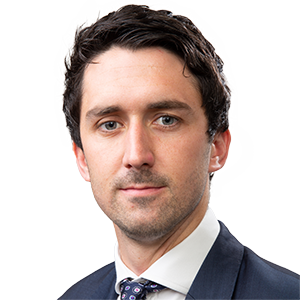Introduction
As we move into the 2023/24 Premiere League season, we keep an eye on other trends that are of particular interest and which we will continue to monitor throughout the season.
A. Brighton and Brentford; Bloom and Benham
Whilst nether Brighton nor Brentford were involved in a change of ownership in the last year, their respective successes on the pitch ensured that both clubs caught the attention of the wider footballing public and media.
Brighton and Brentford are clubs of interest for a number of reasons and are increasingly being recognised as “model clubs”. Both clubs are controlled by UK nationals, who have invested in the clubs that they supported as children and, partly as a result, have maintained strong fan relations and community links. Both clubs have adopted a multi-club ownership model, with Brighton’s owner Tony Bloom also owning a majority stake in Belgian side Royale Union Saint-Gilloise and Benham also invested in FC Midtjylland in 2014. Both Benham and Bloom have saved their clubs from a very real prospect of financial turmoil and collapse, and overseen impressive rises through the Football League, to a sixth place finish for Brighton (also securing qualification to the Europa League for the first time) and a ninth place finish for Brentford this season, whilst also overseeing the construction of new stadiums.
It is this shared background in sports betting and data analytics that makes these two clubs particularly interesting and commentators have suggested that both “Brighton and Brentford have transformed their fortunes by placing data at the centre of their respective organisations”. The success they have both enjoyed in recent years will no doubt influence their competitors, and The Telegraph reported in May 2023 that Daniel Levy has apparently held talks with betting experts in an attempt to emulate the success that Brighton and Brentford have had in the transfer market.
Both Brighton and Brentford have, with an understanding of the circumstances they are in and the competition they are facing, each adopted a data-led approach to player recruitment. Brighton’s approach has been particularly successful in recent years, perhaps best demonstrated by their acquisition of Marc Cucurella for a reported £15m in the summer of 2021, before then selling the player on to Chelsea the following summer for a reported £56m initial payment, with the possibility of a further £7m of additional clauses being due as well. Chelsea’s Levi Colwill also went on loan to Brighton during the season as part of the deal, and went on to have a very successful season with Brighton. What is perhaps most impressive about Brighton’s track record on player recruitment and transfers is how they are able to ensure that there is a ready-made replacement prior to authorising any player disposal (Bissouma, for instance, was quickly replaced by Caicedo and likewise Mitoma had already been identified to replace Trossard following the Belgian’s £27m move to Arsenal in the January 2023 transfer window).
Underlining the success of Brighton’s player recruitment model, both of Caicedo and Mitoma have already been the subject of great interest from other clubs, with Chelsea’s long running pursuit of Caicedo being evidence of this.
B. Power of the brand/content creation
We have commented on the Ryan Reynolds and Rob McElhenney investment into Wrexham in our last two annual reports, 2021 and 2022 and Wrexham continue to go from strength to strength under the Reynolds/McElhenney ownership, with a return to the Football League following a 15-year absence, coupled with a high-profile run in the FA Cup and also the highly acclaimed docuseries “Welcome to Wrexham”.
As a purely sporting investment, it has clearly been a success. With certain bookmakers making Wrexham favourites to win League Two outright next season, it seems there is a good chance that this on-field success will continue. There has also been success off the pitch as well. The “Welcome to Wrexham” series, in particular, has been very well received, and is a clear example of the successful leveraging of the brand and the value that quality content creation can provide.
The trend of high-profile figures from the US investing into UK football clubs (likely accelerated somewhat by the high-profile success of Reynolds and McElhenney) has continued over the last 12 months. Former NFL star JJ Watt and former USA international Kealia Watt announced in May 2023 an investment into Burnley Football Club and Hollywood actor Michael B. Jordan was also revealed as a minority investor in the Bill Foley-led investment vehicle that acquired AFC Bournemouth from Maxim Demin in December 2022. The latest example is NFL superstar Tom Brady investing into Birmingham City Football Club in August 2023, entering into a partnership with the club’s new owners, Knighthead Capital Management LLC.
As an aside, another particularly interesting aspect of the Reynolds and McElhenney investment into Wrexham, as well as the Bournemouth and Burnley examples, is what the concept of the football pyramid in the UK provides to potential investors from the US. Whilst the threat of relegation adds complication with regards to valuation, and then from an on-going funding perspective (‘relegation scenario’ financial planning being a key part of a management’s running of a club), the prospect of taking a club from a lower league (with a lower valuation) through the football pyramid, is clearly an enticing one. This is particularly the case for US investors who are more accustomed to closed leagues, a concept alien to those in the UK, where relegation and promotion drives the competitive nature of the league. The football pyramid also increases the number of potential targets for investors. The valuations ascribed to US franchises, partly driven by the finite number of franchises, simply means that there a few individuals/groups who could actually afford to buy these assets.
C. Stakebuilding/consortia
The Todd Boehly/Clearlake acquisition of Chelsea in 2022 was noteworthy for a number of reasons. For the first time in many years, we saw one of the traditional ‘Big 6’ clubs bought and sold. This also gave the ownership groups of the other ‘Big 6’ a price point, or confirmation of what someone in the market might be willing to pay for one of these assets. The value of the total investment being made ¬– £4.25bn (consisting of a £2.5bn purchase price and £1.75bn in further investment) – means that the pool of possible purchasers of the very biggest clubs in European football will, going forward, likely be very small, and it seems likely that similar potential purchasers in the future will be limited to the very richest individuals or sovereign wealth funds, or, perhaps more likely, only capable of being financed if acquired by a consortium of investors, who collectively finance the acquisition and manage the club post-acquisition. This is a model that is commonplace in other sectors. For example, in the very largest infrastructure assets, such as airports and ports where the ownership of smaller stakes in such assets are often bought and sold quite regularly, and it could be that such a trend arises in the acquisition and ownership of the very largest football clubs.
It is also possible that the amounts paid by Boehly/Clearlake for Chelsea might well have influenced the decisions of the Glazers and Fenway Sports Group in November 2022 to consider seeking external investment for both Manchester United and Liverpool, respectively. For rivals such as Liverpool and Manchester United to both start comparable processes in the same month was very interesting, particularly given that the banks in charge of the processes would likely have been approaching the same or similar groups of potential investors for each process.
Whilst the Liverpool process appeared to attract less attention in the press, the Manchester United process has been a continued long running story since November, with multiple rounds of bids being made, tension between current owners and fan groups (the Manchester United Supporters’ Trust in mid-April called for the “process to be concluded without further delay") and confusion as to whether the Glazers were looking for a full or partial sale of their ownership interest. It is unclear how this will reach its conclusion, with the two known bidders for Manchester United (Sir Jim Radcliffe and Sheikh Jassim bin Hamad Al Thani) having made what are being reported as final bids.
Whilst the details of each process were confidential, it is interesting that neither process was swiftly concluded, which suggests that there is not a long list of individuals or groups waiting in the wings to acquire such clubs (perhaps due to current valuations), and supports the idea that the more likely way that the very biggest clubs will change hands in the future will be as a result of an acquisition by a consortium of investors, who are willing to part-finance the acquisition with others, but are unable or unwilling to solely finance the entire acquisition alone.
D. Post-retirement plans
Prior to the inception of the Premier League and the boom of investment into professional football in England, it was not uncommon for a player’s retirement plans to centre on becoming a publican, with England World Cup winning captain Bobby Moore, a particularly high-profile example. However, given the level of wages now within professional football (Kevin De Bruyne is reported to be the Premier League’s top earner on approximately £400,000 per week), a growing number of ex-players are looking beyond running a pub, punditry or management as their next career and increasingly we expect to see more and more ex-players investing in or acquiring football clubs.
David Beckham, through his ownership interest in Inter Miami, and also, along with the rest of the Class of ’92, their ownership of Salford City, may have been the highest profile early example of this, however, Brazilian ex-footballer Ronaldo has joined an increasingly growing number of ex-players to consider investment opportunities and has bought controlling stakes in both Real Valladolid in 2018 and Cruzeiro in 2021. It has also been reported that, as part of his contractual arrangements with Inter Miami, Lionel Messi will have the option to acquire a franchise in the MLS upon his retirement.
We expect this trend to continue, and whilst these ex-pros will be priced out of acquiring the biggest clubs alone, we expect to see more and more activity from this group of recently retired players, and likely as part of a consortium approach to acquisition. It also appears that this trend isn’t limited to ex-footballers, with US golfers Jordan Spieth and Justin Thomas investing in 49ers Enterprises, which completed its takeover of Leeds United from Andrea Radrizzani following the receipt of EFL approval on 17 July 2023.
Even more recently, Wilfried Zaha, together with Stormzy and Danny Young have reached agreement to acquire the assets of AFC Croydon Athletic, their local side who are currently members of the Combined Counties Football League, in the ninth tier of English football.
E. NFTs/Web 3
In our report last year, we discussed the seemingly unique approach that WAGMI United LLC had taken at Crawley Town, specifically their approach of trying to leverage a new audience (those perhaps more interested in NFTs than traditional sports) to build a larger fan base and a larger profile for the club – and that we would follow with interest.
It has certainly been eventful. With Crawley narrowly avoiding relegation from League 2, it was a season that involved various managerial changes, the reported inclusion of certain untypical performance-based incentives (including a financial incentive for one player to win the ball back in the opposition half) and even the sight of co-Chairman Preston Johnson in the dug-out for a game.
Whilst WAGMI were very open in their desire to approach their Crawley investment in a different manner, it appears that WAGMI are facing the same challenges that many other more traditional owners have – including fan engagement (a theme that runs throughout this report). If an owner loses the support of the fans (however novel their approach to ownership may seem) it is very difficult to win them back (usually only investment in staff and facilities, coupled with improvement of on-field results, will do). The Crawley Town Supporters Alliance (CSTA) have become increasingly vocal recently, firstly with an open letter of 17 April 2023 to WAGMI, seeking, amongst other things, “a constructive dialogue” with the ultimate beneficial owners of WAGMI United as a result of the failure (despite several reported attempts) of the “Co-Chairmen and interim CEO of Crawley Town Football Club to hold a formal meeting with the fans.” Even more recently, on 7 June 2023, CSTA encouraged its members to consider voting for one of two alternatives, the latter option being “For the CSTA to pursue any alternative legal means necessary to ensure the current Co-Chairmen are replaced.” Although it is unclear from the press release what “legal means” might include (we suspect it is intended to refer to actions that are not illegal, rather than a possible legal course of action), it does serve to demonstrate the level of rancour amongst some of the fans at Crawley. Ownership of a football club is not the same as ownership of any other asset and a lack of regular and transparent communication with fans regularly seems to lead to the downfall of an owner.








